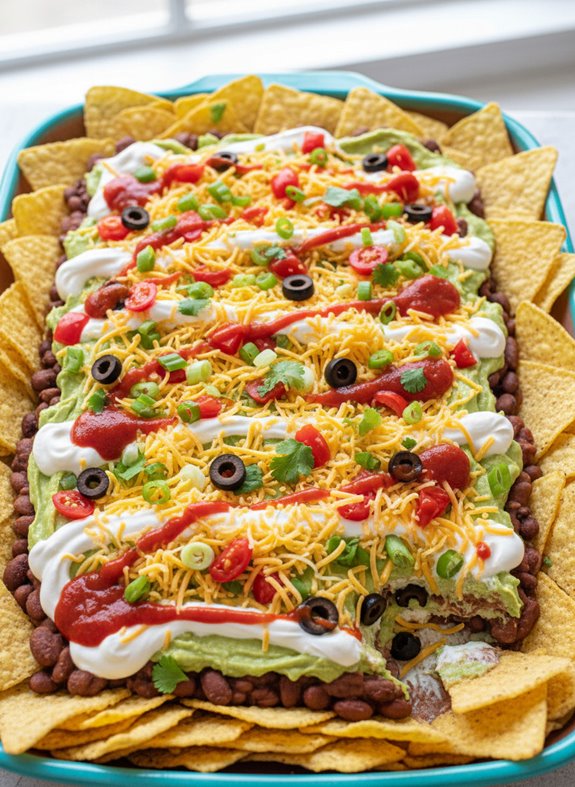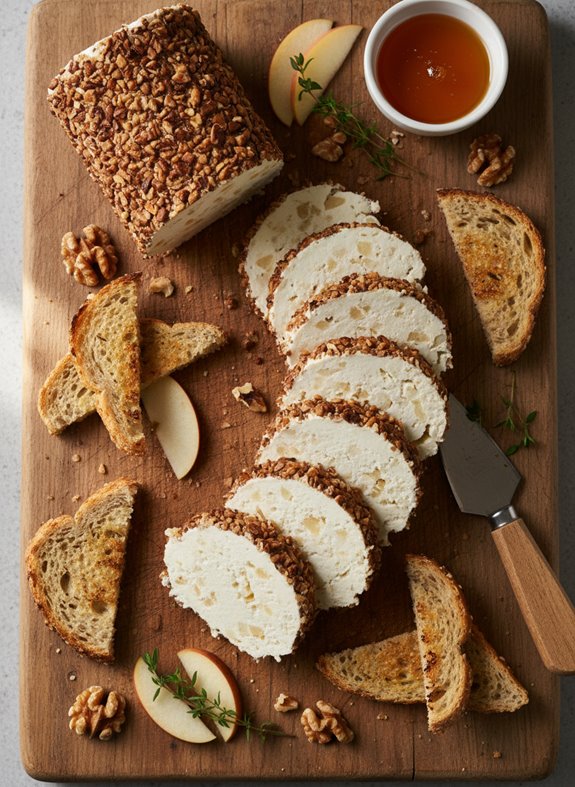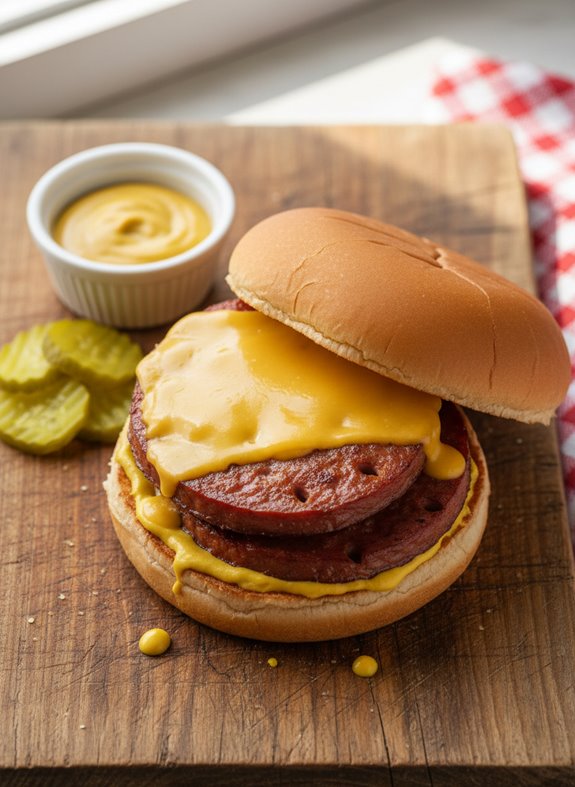Why You’ll Love this Rustic Pizza Bianca
While traditional pizza with tomato sauce and toppings often steals the spotlight, this rustic Pizza Bianca deserves a special place in your recipe collection.
I’m obsessed with its simplicity – just a chewy, airy crust kissed with olive oil, kosher salt, and fresh rosemary.
What makes it irresistible? The texture is magical – crispy exterior giving way to a pillowy, tender interior.
And that flavor? Pure comfort. The dough gets time to develop complex notes, almost like a good sourdough, minus the fuss.
Perfect for dipping in olive oil, serving alongside pasta, or enjoying on its own.
Trust me, you’ll never look at “white pizza” the same way again.
What Ingredients are in Rustic Pizza Bianca?
This Pizza Bianca recipe calls for surprisingly few ingredients, yet delivers incredible flavor.
The magic lies in the fermentation process, which allows the dough to develop complex flavors similar to artisanal bread. Traditional Italian Pizza Bianca is all about showcasing the quality of each simple ingredient, from the olive oil to the flaky sea salt that brings everything together.
- 15 ounces (3 cups) unbleached all-purpose flour
- 13½ ounces (1⅔ cups) room temperature water
- 1¼ teaspoons table salt
- 1½ teaspoons instant yeast
- 1¼ teaspoons sugar
- 5 tablespoons extra virgin olive oil
- 1 teaspoon kosher salt
- 2 tablespoons whole fresh rosemary leaves
The quality of your olive oil really matters here, so use the best extra virgin olive oil you can afford—it’s one of the star flavors.
For the rosemary, fresh leaves will give you the most aromatic result, though in a pinch, dried rosemary could work (just use about half the amount).
And while it might be tempting to add more toppings, resist the urge. The beauty of Pizza Bianca lies in its simplicity, allowing you to truly appreciate the perfect texture and subtle flavors of this Italian classic.
How to Make this Rustic Pizza Bianca

Making Pizza Bianca is surprisingly straightforward, though it does require a bit of patience as the dough develops its wonderful flavor. Start by placing a towel under your stand mixer to prevent it from dancing across your counter.
Mix 15 ounces of unbleached all-purpose flour with 13½ ounces of room temperature water and 1¼ teaspoons of table salt in your stand mixer bowl fitted with a dough hook. Let this mix on low speed for 3-4 minutes until no dry flour remains, scraping down the sides occasionally. This hydration period is key to developing that authentic texture, so after mixing, let the dough rest for 20 minutes—trust me, this waiting time makes all the difference.
Next comes the magic of fermentation. Sprinkle 1½ teaspoons of instant yeast and 1¼ teaspoons of sugar over your rested dough, then knead on low speed until combined. Turn the speed up to high and knead until the dough becomes glossy and smooth, pulling away from the sides of the bowl while the mixer runs (about 6-10 minutes).
Transfer this gorgeous dough to a bowl smeared with 1 tablespoon of olive oil, then pour another tablespoon over top and flip once to coat. Cover tightly with plastic wrap and let it rise until nearly tripled in size, which takes about 2 to 2½ hours. During the last hour of rising, place your pizza stone on the middle rack and preheat your oven to 450°F.
When the dough has risen, coat a rimmed baking sheet with 2 tablespoons of olive oil and gently stretch the dough to the edges using your fingertips—don’t worry if it doesn’t quite reach the corners. After letting the dough rest in the pan for 5-10 minutes until bubbly, prick the surface 30-40 times with a fork and sprinkle with 1 teaspoon of kosher salt. Bake for 10-15 minutes, then sprinkle with 2 tablespoons of fresh rosemary leaves, rotate the pan, and bake for another 10-15 minutes until golden brown.
The moment of truth comes when you brush the hot bread with your remaining 1 tablespoon of olive oil, releasing an aroma that will make your kitchen smell like a Roman bakery. Slice it up and serve immediately—warm Pizza Bianca waits for no one.
Rustic Pizza Bianca Substitutions and Variations
Though the classic Pizza Bianca recipe creates a sublime Roman-style flatbread, you needn’t feel locked into following it precisely.
I’ve played with countless variations that still capture its rustic charm.
Try topping with thinly sliced garlic instead of rosemary, or mix in herbs like thyme or oregano directly into the dough.
For a heartier version, scatter caramelized onions or oil-packed sun-dried tomatoes before baking.
Don’t have a pizza stone? A preheated cast-iron skillet works surprisingly well.
And if you’re feeling adventurous, a sprinkle of fennel seeds or red pepper flakes adds unexpected depth.
The beauty of Pizza Bianca? Its simplicity invites creativity.
What to Serve with Rustic Pizza Bianca
When served piping hot from the oven, rustic Pizza Bianca pairs beautifully with an array of complementary dishes that enhance its simple, olive oil-kissed charm.
I love serving mine alongside a peppery arugula salad with lemon vinaigrette, which cuts through the richness perfectly.
For a heartier meal, try it with thinly sliced prosciutto or a bowl of creamy tomato soup.
Remember those antipasti platters at Italian restaurants? Create your own with marinated artichokes, olives, and roasted red peppers.
Ever tried it with a glass of crisp white wine? Trust me, a chilled Pinot Grigio transforms this humble bread into a sophisticated dining experience.
Final Thoughts
As you pull your homemade Pizza Bianca from the oven, its golden crust crackling and the aroma of rosemary filling your kitchen, you’ll understand why this rustic Italian flatbread has stood the test of time.
I’ve made this recipe countless times, and it never disappoints. There’s something magical about the simplicity—just flour, water, yeast, and that generous drizzle of olive oil creating something so satisfying.
Whether served as an appetizer, side dish, or casual dinner, Pizza Bianca reminds us that good food doesn’t need to be complicated.
Trust me, once you’ve mastered this dough, you’ll find yourself craving its chewy interior and crisp exterior regularly.

Rustic Pizza Bianca
Ingredients
Equipment
Method
- Place a towel under your stand mixer to stabilize it. In the mixer bowl fitted with a dough hook, combine flour, water, and table salt. Mix on low speed for 3-4 minutes until no dry flour remains, scraping down sides as needed.
- Allow the dough to rest for 20 minutes for proper hydration.
- Sprinkle yeast and sugar over the rested dough. Knead on low speed until combined, then increase to high speed and continue kneading until the dough becomes glossy and smooth, pulling away from the sides while the mixer runs (approximately 6-10 minutes).
- Coat a bowl with 1 tablespoon of olive oil. Transfer the dough to the bowl, then pour another tablespoon of olive oil over top and flip once to coat completely. Cover tightly with plastic wrap.
- Let the dough rise until nearly tripled in size, about 2 to 2½ hours.
- During the last hour of rising, place a pizza stone on the middle rack and preheat your oven to 450°F (230°C).
- Coat a rimmed baking sheet with 2 tablespoons of olive oil. Gently transfer the risen dough to the sheet and stretch it toward the edges using your fingertips. Don’t worry if it doesn’t reach the corners completely.
- Let the dough rest in the pan for 5-10 minutes until bubbly, then prick the surface 30-40 times with a fork and sprinkle with kosher salt.
- Bake for 10-15 minutes, then sprinkle with fresh rosemary leaves. Rotate the pan and bake for another 10-15 minutes until golden brown.
- Immediately brush the hot bread with the remaining 1 tablespoon of olive oil. Slice and serve warm.



